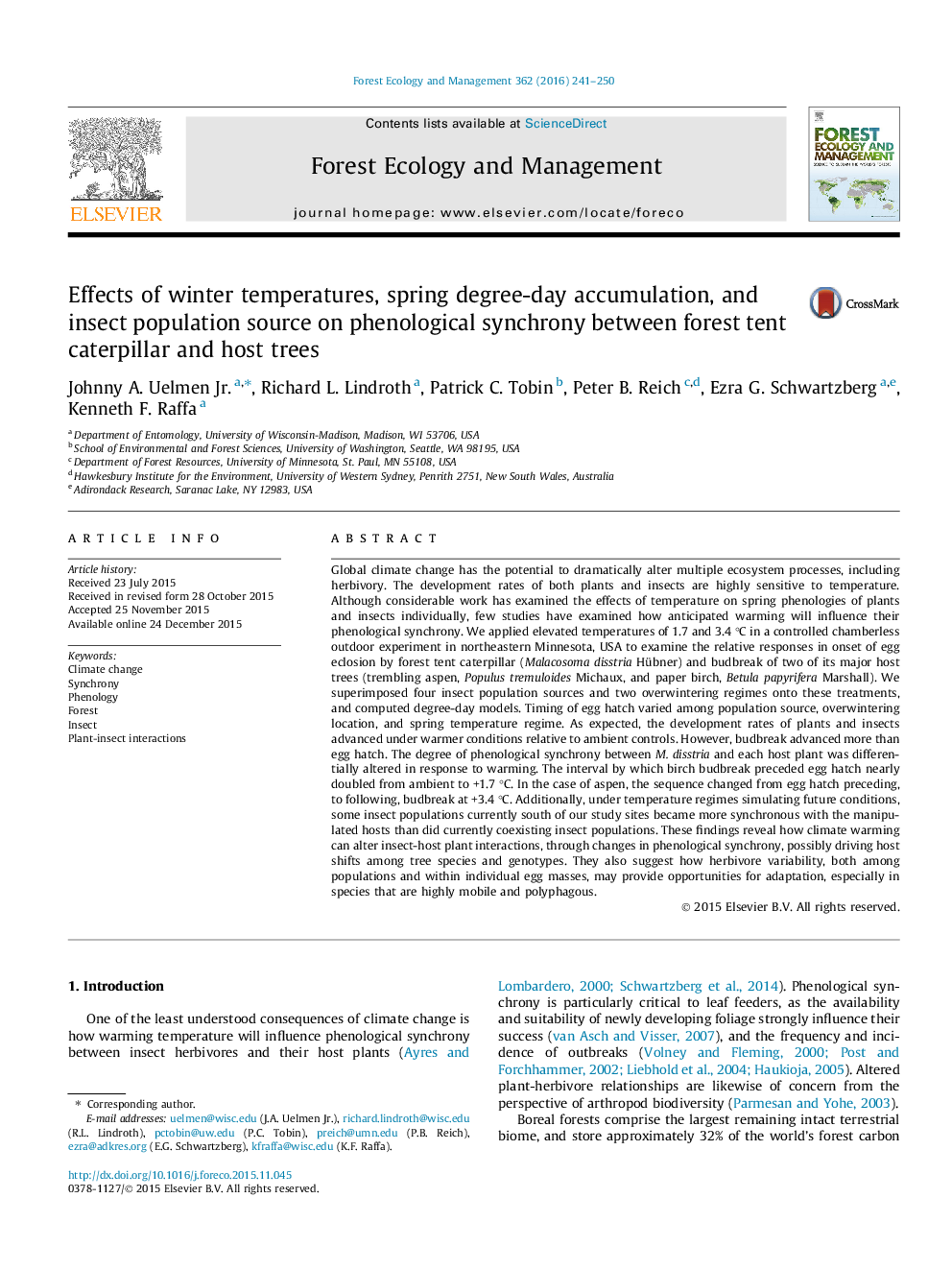| کد مقاله | کد نشریه | سال انتشار | مقاله انگلیسی | نسخه تمام متن |
|---|---|---|---|---|
| 85989 | 159155 | 2016 | 10 صفحه PDF | دانلود رایگان |
• Simulated temperature modeling outdoor mesoscale phenology between FTC and hosts.
• Increased temperatures advanced budbreak more than egg hatch.
• FTC degree-day models vary among populations collected along a 550 km gradient.
• Overwintering temperatures also influenced egg hatch timing.
• This study informs a poorly understood piece of forest responses to climate change.
Global climate change has the potential to dramatically alter multiple ecosystem processes, including herbivory. The development rates of both plants and insects are highly sensitive to temperature. Although considerable work has examined the effects of temperature on spring phenologies of plants and insects individually, few studies have examined how anticipated warming will influence their phenological synchrony. We applied elevated temperatures of 1.7 and 3.4 °C in a controlled chamberless outdoor experiment in northeastern Minnesota, USA to examine the relative responses in onset of egg eclosion by forest tent caterpillar (Malacosoma disstria Hübner) and budbreak of two of its major host trees (trembling aspen, Populus tremuloides Michaux, and paper birch, Betula papyrifera Marshall). We superimposed four insect population sources and two overwintering regimes onto these treatments, and computed degree-day models. Timing of egg hatch varied among population source, overwintering location, and spring temperature regime. As expected, the development rates of plants and insects advanced under warmer conditions relative to ambient controls. However, budbreak advanced more than egg hatch. The degree of phenological synchrony between M. disstria and each host plant was differentially altered in response to warming. The interval by which birch budbreak preceded egg hatch nearly doubled from ambient to +1.7 °C. In the case of aspen, the sequence changed from egg hatch preceding, to following, budbreak at +3.4 °C. Additionally, under temperature regimes simulating future conditions, some insect populations currently south of our study sites became more synchronous with the manipulated hosts than did currently coexisting insect populations. These findings reveal how climate warming can alter insect-host plant interactions, through changes in phenological synchrony, possibly driving host shifts among tree species and genotypes. They also suggest how herbivore variability, both among populations and within individual egg masses, may provide opportunities for adaptation, especially in species that are highly mobile and polyphagous.
Journal: Forest Ecology and Management - Volume 362, 15 February 2016, Pages 241–250
